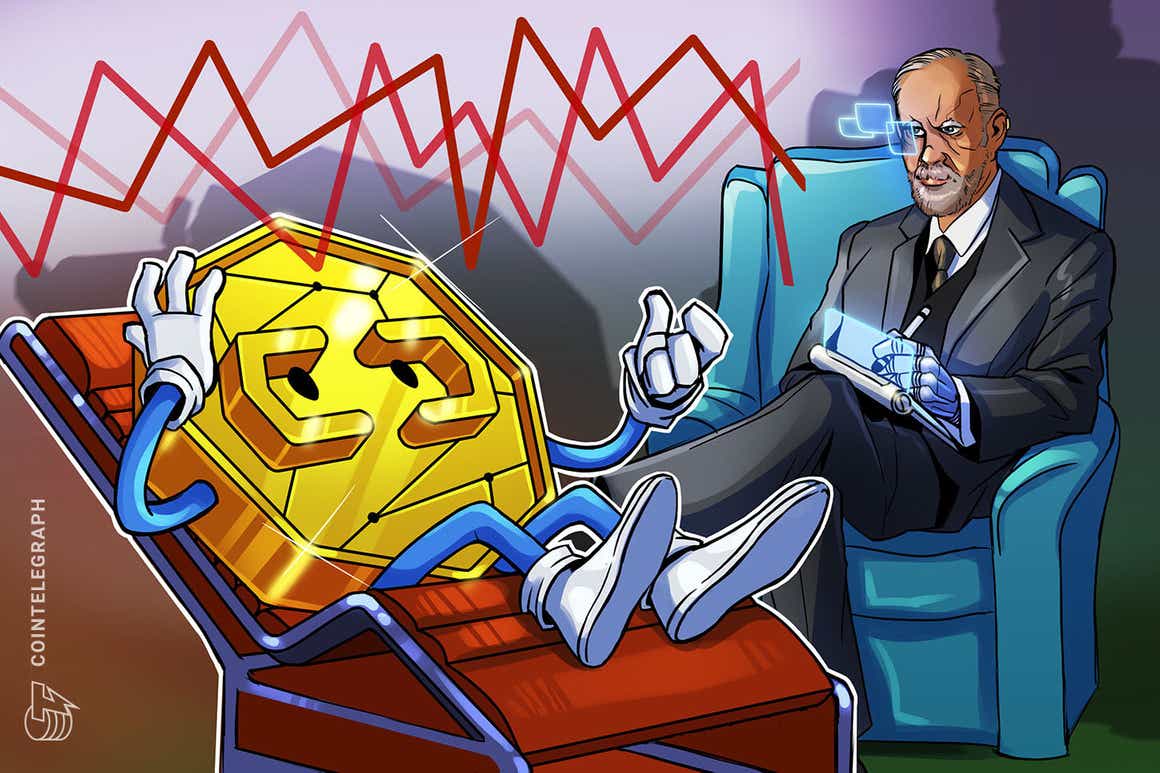New protocols are launching everyday on different networks in the crypto space and the trend is likely to continue through this year. When looking at the top 5 networks by total value locked (TVL) — Ethereum, Terra, Binance Smart Chain (BSC), Avalanche and Solana, according to data from DeFiLlama, Ethereum have 579 protocols (including L1 and L2); Terra has 25, BSC has 348, Avalanche and Solana have 187 and 64 protocols respectively. The low number of protocols and high TVL from Terra surely stands out as the outlier here.
Terra’s TVL reached an all time high at $20 billion December 2021 before dropping to $13 billion during the January 2022 crash. To date, the ecosystem managed to boost its liquidity back to $26 billion.
With only 25 protocols built on the chain, Terra has attracted enough TVL to become the second largest network after Ethereum. The recent announcement of backing UST (Terra’s stablecoin) with $1 billion worth of Bitcoin reserves and the Mars protocol launch coincide nicely with the sudden rise in LUNA price at the end of February 2022.
The rise in the chain’s governance token is often an indication of confidence in the network and the protocols, but does a new protocol launch always add value to the network and stimulate user activity and engagement?
Let’s take a look at how the price of LUNA changed when new protocols launched on Terra; then investigate how the most recently launched Mars and Astroport protocols impacted native token prices, user engagement and LUNA price.
LUNA is the tool that ensures the UST-USD peg
Before looking into the correlation between LUNA price and the new protocol launch, it is important to understand the LUNA-UST mechanism that ensures the peg of stable coin UST to USD.
LUNA is used as a counterpart to UST to maintain the price peg of UST to USD. When UST is worth more than $1, it means there is more demand for UST than supply in the Terra ecosystem. So the protocol incentivises participants to burn LUNA and mint UST to meet the increasing demand of UST until the value of 1 UST is equal to $1. On the contrary, when UST’s price is lower than $1, there is more supply of UST than demand so UST will be burnt and LUNA will be minted until UST’s value reaches $1 again.
By regulating the supply of LUNA in the ecosystem, Terra can effectively keep UST pegged to USD. This mechanism also causes LUNA’s price to increase as the demand for UST increases.
LUNA price is highly correlated with new protocol launches
Very often during the initial pre-launch phases of a new protocol, there is a sudden increase in demand for UST. This is because participants wish to obtain airdrop incentive tokens from the new protocol and they are often asked to lock up UST to provide enough liquidity for the protocol when it launches.
The increasing demand in UST from participants during pre-launch phases of the new protocol causes more UST to be minted and more LUNA to be burnt, resulting in a sudden increase in LUNA price during these pre-launch phases.
Here is an example of the recently launched Mars protocol, where LUNA price jumped from sub $50 to over $60 in two days right after the new protocol pre-launch phases started.
LUNA February 2022 price. Source: CoinGecko
Here is another example of how LUNA price went up from sub $60 to over $90 in December 2021 right after Astroport’s pre-launch phases started.
 LUNA November to December 2021 price. Source: Flipside Crypto
LUNA November to December 2021 price. Source: Flipside Crypto
The new protocol launch in the past two recent cases did help push up LUNA’s price, which can be seen as a positive effect on the Terra network. But to know whether they add value to the Terra ecosystem, one needs to also look at the protocol’s token price and user engagements after the launch.
ASTRO price and volume after the launch
Astroport accumulated $90 million in the lockdrop, but the token price of ASTRO has experienced a downturn after the launch of the protocol due to the bearish market environment at the beginning of 2022. The price has picked up since the beginning of March and now is trading its launch valuation.
 ASTRO/UST price since Astroport launch. Source: TradingView
ASTRO/UST price since Astroport launch. Source: TradingView
The daily number of swaps on Astroport has been gradually increasing since the launch for about three months, indicating active user engagement on the platform after the airdrop.
 Astroport total swap count. Source: Flipside Crypto
Astroport total swap count. Source: Flipside Crypto
The total trading volume transacted on Astroport has also shown a strong increasing trend since the launch, which peaked in the middle of March.
 Astroport trading volume in USD. Source: Flipside Crypto
Astroport trading volume in USD. Source: Flipside Crypto
The Astroport launch was successful and the post launch data also show that the platform has been able to maintain user activities and engagements. The story of Mars protocol is however quite different.
Mars price and volume after the launch
Immediately after the Mars launch on March 7 2022, MARS token price dropped off a cliff within an hour from 1.65 UST to 0.7 UST. This is very different from the price reaction right after Astroport’s launch. So what happened to MARS?
It turns out that the protocol couldn’t load successfully in the web browser at the time when it was scheduled to go live on March 7, 11 a.m. GMT. Users who attempted to claim the airdrop tokens through the protocol’s website failed to do so and had to wait until the website became functional.
However, sophisticated users who knew how to interact with Terra chain directly called the claim rewards method on Terra station and managed to claim MARS ahead of the non-tech savvy users. They dumped the tokens immediately in the market, causing the immediate drop in price.
 MARS/UST price 4-hour. Source: TradingView
MARS/UST price 4-hour. Source: TradingView
To explain a bit more in detail how one could claim MARS by interacting with Terra chain, the investor first needs to know Mars protocol’s airdrop contract address, which is publicly available on etfinder; then they need to know which method in the code to call on Terra Station to claim the rewards, which is the tricky part.
Since the protocol only just launched, the code is often not available in the public domain for people to find the claim method. But a wild guess most of the tech savvy investors had was that Mars protocol was forked from Astroport. So the claim method could be highly likely the same as Astroport’s. It turned out to be true and these investors managed to claim MARS airdrop using the same function “claim_rewards_and_unlock” on the chain.
Three hours after the official launch time, Mars protocol’s website was still not functioning and the airdrop MARS still couldn’t be claimed from the website. The price of MARS had already dropped to $0.64 from $1.65 — a 60% drop in three hours and nothing could be done if the investor did not know how to interact with Terra chain.
Protocol is still not working… and $MARS are getting dumped like trash…
— E.Hu (@elenahoolu) March 7, 2022
Let’s have a look at the two major products on Mars protocol right after the launch. Red Bank, the saving and lending space, has failed to maintain user engagements after the airdrop. The number of transactions peaked on the third day after the launch to almost 5,000 a day and has been dropping since then. The daily volume in USD has also been decreasing since day 1 from $212 million to $13 million as of March 27.
 Mars Red Bank transaction count and volume in USD. Source: Flipside Crypto
Mars Red Bank transaction count and volume in USD. Source: Flipside Crypto
Fields is the space in Mars protocol for yield farming strategies where users can provide liquidity to ANC-UST, LUNA-UST and MIR-UST. Fields’ historical transaction and volume after the launch show a similar story. The product struggles to maintain the same level of activity as the launch day and the number of transactions is 1/8 of what it was at the peak while the volume in USD is less than 1/30 of the launch day.
 Mars Fields transaction count and volume in USD. Source: Flipside Crypto
Mars Fields transaction count and volume in USD. Source: Flipside Crypto
Although it’s not certain that the incident at the launch affected Mars protocol’s user engagements and confidence, the data shows the protocol has been struggling to attract volumes and activities since the launch.
A new protocol launch does not necessarily always add value to the network, as shown in the comparison between Astroport and Mars, which have very similar pre-launch strategies but very different outcomes post launch.
Incidents on the launch day jeopardize not only the protocol, but could also affect user confidence in the ecosystem. An airdrop incident allowing only the tech savvy investors to claim first will drive away the vast majority of future investors. New protocols launching on Terra chain in the future should make greater efforts to prevent such incidents, otherwise investors’ long-term interests and trusts could evaporate sooner than one could imagine.
The views and opinions expressed here are solely those of the author and do not necessarily reflect the views of Cointelegraph.com. Every investment and trading move involves risk, you should conduct your own research when making a decision.



